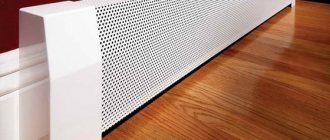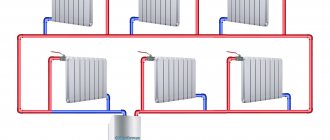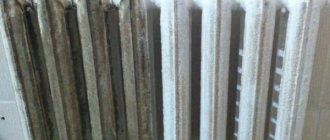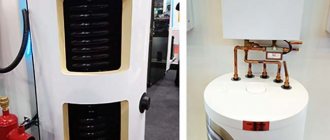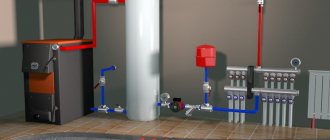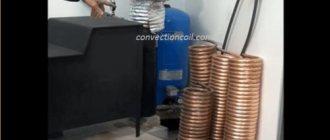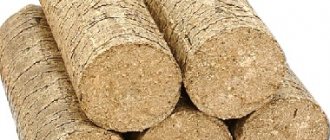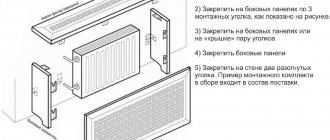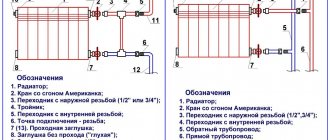White cast iron batteries are an indispensable attribute of a public place, especially a state one. You can also find such batteries in residential buildings and apartments. This is explained by the fact that cast iron is a durable and practical material. However, what to do when such a battery does not want to fit into the interior of the room, completely contrasting with it? There is an answer - this is the decor of radiators. Every jack-of-all-trades or do-it-yourselfer will be able to revive his cast-iron batteries using practically improvised means, using our master class and tips.
Radiator decor
Battery decoupage master class
We have outlined the basic principles of battery decoupage. The master class will consist of a more detailed description of the application of drawings and their attachment to the radiator.
We will need:
- sandpaper;
- solvent for degreasing the surface;
- white oil enamel;
- PVA glue;
- rice paper or decoupage napkins;
- brushes;
- heat-resistant varnish (up to 150 0 C);
- acrylic paints for painting in case of inconsistencies in the drawings.
Carefully sand the surface of the battery, removing the old paint.
We remove any remaining dust, wash the battery, and degrease it after drying.
Apply a layer of white oil enamel. Nitro paint is not suitable, since it does not have proper heat resistance; the paint will swell when heated.
Allow at least 24 hours to dry.
Preparing the drawing for application. It consists in correctly marking the pictures for each section. Excess paper is removed.
Trying on the resulting cut-out images on the corresponding sections.
Dilute PVA glue with water in a ratio of one to one. Let's start gluing the drawings onto the edges of the battery, following from the center of the cut out image.
When the cut out individual images are combined into a single drawing, let us critically examine the resulting composition. If inconsistencies occur in images, acrylic paints can be used to correct any distortions. Then we paint the upper and lower parts of the section that are not covered with napkins. You should select paints to match the color scheme of the decoupage.
Let the created composition dry thoroughly.
We cover the entire radiator with heat-resistant varnish.
The appearance of heating radiators installed in homes, even if they are the most modern, does not suit everyone. That is why many people prefer to disguise them behind special screens or paint them. You can decorate batteries very beautifully and stylishly using the decoupage technique. The surface of modern flat batteries attracts many people, since it is possible not only to apply a separate design, but also to create entire unusual pictures.
Decoupage of heating radiators with your own hands is quite simple; the most important thing is to correctly choose the appropriate background that will fit perfectly with the overall interior of the house. If the heating radiator has lost its former attractive appearance, then it needs to be repainted.
Special pictures and patterns made on:
- Specially designed napkins for decoupage;
- Thin rice paper;
- Ordinary multi-layer paper napkins.
The background color does not have to be white, so it can be selected depending on the existing pattern. To perform decoupage with napkins, you need to prepare certain materials and tools.
In particular:
- Drawings on napkins;
- Sandpaper;
- PVA glue;
- Brush;
- Acrylic lacquer;
- Rags.
The painted radiator should dry for 24 hours, and then the areas to be painted should be cleaned a little with sandpaper and wiped with a damp cloth. Before making decoupage with napkins, you need to determine the location for the design and cut the napkins into separate parts.
If you are going to paste the battery with ordinary paper napkins, then initially you need to separate the thin layer with the applied pattern from all the rest. Apply glue to the surface of the battery with a brush and spread it well so that there are no dry areas left. A napkin with a pattern must be firmly fixed on the radiator very carefully, since the paper is very thin and can easily crumple and then everything will have to be redone. When all the patterns are completely glued to the battery, you need to apply acrylic varnish on top to give the surface a glossy effect and not damage the napkins during cleaning.
You can also decoupage batteries using special stencils, which must be fixed on the surface of the battery, and then applied with acrylic paints. When the drawing is dry, it is not necessary to varnish it, since the drawing will stick without it. To perform decoupage on cast iron batteries, you need to take napkins with a small repeating pattern applied to them, since it will not be possible to create one complete picture.
Decoupage on a battery with napkins in other ways
Most apartments are equipped with cast iron radiators, which do not look attractive enough. Today, there are many different options for stylish design of radiators.
To decoupage the battery, you should use multi-layer napkins
You can give your heating radiator a beautiful and stylish look in a variety of ways, in particular:
- Paint the external surface with special acrylic paints;
- Apply drawings or ornaments to the battery;
- Make decoupage;
- Make overhead drawings.
When decorating a battery, you can get an original, exclusive product that will look very stylish and fit in with the rest of the interior.
Decoupage of a battery with paper napkins and other materials can look simply unique if done correctly.
Decoupage. Technology
Decoupage is an imitation of painting. And any painting requires a flat base. New radiators are produced with smooth-walled sections, so the pattern will fit perfectly. But you will have to work on old cast-iron rarities to level the surface as much as possible and remove layers of old paint, drips and rust stains.
Old batteries require preparation for decoupage
Step one. Removing old paint
Old paint is not easy to remove.
You can try using a solvent, applying it to the surface of the radiator and scraping off the softened enamel with a metal spatula. But if there are too many layers of paint, the option is too tedious. Plus, the pungent odors of solvents have a detrimental effect on health.
Another way is mechanical. Sandpaper with different grain sizes and an angle grinder with abrasive attachments will be used.
Many craftsmen advise cleaning the surface of batteries using a drill and a brush attachment (wire or polymer-abrasive). Old paint will fly off in no time, but it’s worth coordinating noisy work with your neighbors.
Repair and auto repair shops often offer sandblasting services. This method is highly effective, but will require dismantling and transporting a heavy radiator.
And another option is thermal. Old paint can be removed by heating the surface of the radiator with a hair dryer, and then scraping off the peeling enamel with a spatula. If there is an opportunity and desire to dismantle the radiator and take it out of the room, then a burner is used for cleaning. All that remains is to lightly sand the cast iron surface.
After removing the old paint, the radiator should be degreased with white spirit and then coated with a layer of anti-corrosion alkyd primer to improve the adhesion of the paint layer to the metal. The drying time of the putty is from 20 minutes to several hours.
Step two. Radiator painting
First of all, you should choose a paint that will meet the following requirements:
- wear and heat resistance;
- non-toxic;
- no change in the shade of the coating over time.
In addition, it is recommended to choose paint that matches the wall located behind the radiator. Plus, it is advisable to purchase matte water-dispersion paint (labeled “for painting radiators”), decoupage will look more impressive on it, and during the painting process unpleasant chemical odors will not bother you.
The most convenient way to apply paint is with a fur double-sided mitten. A rubber glove is put on the hand, and a fur mitten is placed on top. This makes it very convenient to paint hard-to-reach areas. Don't forget to place oilcloth or newspapers under the radiator so as not to stain the floor.
Step three. Preparation of materials
To begin, take a napkin with the desired pattern and separate the layer with the pattern. We measure the battery sections (length and width) in order to cut the napkin exactly to size. We cut the napkins based on the measurements obtained.
If you don’t have ready-made napkins, you can make them yourself. To do this, find the desired drawing on the Internet. Take a two-layer white paper napkin, place it on top of the printed design and secure it on one side with masking tape. We cut off the excess napkin. Now print out the design you like on a sheet of paper with a napkin attached. Peel off the tape and the napkin is ready.
Video - How to make a napkin for radiator decoupage
For the living room, it is best to select images of nature and abstraction, for the nursery, cartoon characters are appropriate, and in the kitchen, floral motifs and still lifes will look best.
This completes the preparation. Let's get started with creative design.
Step four. DIY decoupage of a heating battery
We take a strip of napkin and glue it with the wrong side to the section of the radiator coated with glue. Smooth the napkin with your hand or a wide brush with soft bristles. If some areas of the strip do not stick, coat these areas with glue directly on top of the napkin. We make sure that no bubbles or unevenness are formed during the process.
We rinse the brush from glue and open the acrylic varnish for decoupage, which can be glossy, matte or with various holographic effects. Using light, precise movements, coat the battery with varnish. The varnish will fix the design and give the work a finished look.
If desired, you can use acrylic paint to apply any lines or additional drawings on top of the napkins to make the work truly exclusive.
We wait until the varnish dries and turn on the heating. The work is completed.
DIY heating radiator decor using decoupage
Using the decoupage technique, it is possible to turn an ordinary battery into a stylish, original and beautiful product.
You just need to show a little imagination and spend a couple of hours of your time. To decorate a heating radiator with your own hands, you will need the following materials:
- acrylic paints;
- matte white paint;
- PVA glue;
- tassels;
- heat-resistant varnish;
- decoupage paper with the desired pattern.
The work looks like this:
- Before decorating the radiators with your own hands, the surface is thoroughly washed and treated with fine sandpaper.
- The battery is wiped so that there is no dust and dirt left on it, and painted with matte paint. If the battery was previously coated with oil paint, then nitro compounds cannot be used - otherwise the surface of the product will be covered with small bubbles (read: " ").
- After 18 hours, when the paint is completely dry, you can start gluing decoupage paper to the battery. Decorative covers on radiators are glued starting from the middle of the motif. To ensure that the glue is evenly distributed over the surface, it must be diluted.
- After the drawing is completely pasted, you can use paint to add any elements to complete the picture.
- Finally, the battery is coated with heat-resistant varnish.
What is the essence of decoupage technique?
Decoupage is a technique of transferring drawings from colored paper to any surface: wood, ceramics, metal, etc. In this way you can decorate anything, from dishes to pieces of furniture. The technology itself is several hundred years old. The fashion for such decoration arose in the Middle Ages in France and does not fade to this day. Some craftsmen even decorate clothes in this way.
People usually try to update old furniture or decorate unsightly interior items with decoupage elements. Many people are especially dissatisfied with old cast iron radiators. They cannot be hidden behind furniture, as it can block access to warm air. Painting doesn't help the situation either. White color makes you bored. Craftsmen found a way out of this situation and turned ordinary radiators into a work of art, decorating them with beautiful and stylish designs.
Decorative panel for battery, lining
Currently, decorative panels for radiators are very popular. Screens can be different - their design can be flat, hinged, hanging, or in the form of a box. These elements are selected based on the design of the radiators, interior features, personal preferences and financial capabilities of the homeowners. Well, you can install it.
The decorative panel for the battery can be made of metal, wood, plastic, glass, MDF panels. When choosing a screen, you need to take into account the characteristics of the material - for example, metal is more durable than wood, which loses its appearance at high temperatures.
The decorative battery box perfectly hides nondescript heating devices.
Screens can have a very interesting design, thanks to which they often become interior decoration. If you want to change the style of the room, you can simply change it to others. When choosing a decorative screen, you need to pay attention not only to its appearance. The main purpose of heating devices is to heat rooms. Screens with a large solid surface area interfere with efficient heating, so such products should be abandoned. It is best to choose panels with a large mesh - they do not interfere with normal heat transfer. In addition, it is desirable that the top of the radiator remains open - warm air rises.
As for the design of the panels, it is preferable that they be attached. It is not recommended to make solid boxes from plasterboard - if repairs become necessary, it will have to be destroyed.
There is nothing complicated about how to decoratively close the battery. It is enough to simply attach the decorative screen to the radiator (more details: " ").
It is very simple to make heating devices decorative - you can paint them, apply an interesting pattern to the surface, or simply install a special panel. If desired, you can turn the radiator into a real decoration of the room, which not only will not spoil the interior, but will also complement it beneficially. In addition, it won’t take much time to paint the batteries or stick decoupage paper on them. It’s even easier with gratings, but this decor option will cost more.
The video shows an example of decorating a heating radiator with your own hands:
The best solutions for the kitchen
The design of kitchens, not as strict as is customary for living rooms, gives free rein to imagination. In addition to the above-described ways to hide heating radiators, in the rooms where culinary masterpieces are created, designer delights are also created to decorate heating radiators. The radiator and the pipe connecting it to the heat source can be painted in the same color as the walls, decorated using the decoupage technique, or these two methods can be combined.
A battery painted to match the walls will be less conspicuous
An even greater effect can be achieved if you paint the battery to match the wallpaper
The battery can be displayed as part of an artistic composition
Many ideas are available on the Internet. Taking them as a basis, you can create a masterpiece on your own and without much labor or time, decorating the external elements of the heating system with an elegant or cheerful design. Battery decoupage involves transferring a design from a carrier onto the metal surface of a radiator. When decorated using the decoupage technique, batteries can be decorated using ready-made designs made on thin paper (both rice paper and ordinary decorative napkins are suitable). There are a lot of design options: flowers, wood decoration, geometric designs.
Rainbow battery
Khokhloma painting on a heating radiator
If you have artistic abilities, then you can do without ready-made solutions and apply paint directly to the surface. For such work you will need heat-resistant paints and varnish. The latter is necessary for those who decide to decoupage the battery themselves. For decoupage you will also need glue; regular PVA will do.
What is decoupage?
From French, the word “decoupage” is translated as “imitation painting”. This effect is achieved by gluing drawings and ornaments onto the surface or painting through stencils. Both options are quite feasible even for those who have never engaged in such manipulations. People without artistic talent will not have to draw beautiful lines and arrange colors. All this has already been done by manufacturers of decoupage materials.
The most popular and easiest way to decorate heating radiators in a residential building is to stick ready-made images or their individual parts. They can be done on:
- special napkins;
- thin rice paper;
- regular paper napkins for table serving.
What decoupage of a heating radiator looks like
Using the decoupage technique, you can decorate any interior items that have lost their attractiveness. Although the modernization of cast iron batteries is considered a priority due to the fact that changing them can be extremely difficult.
Master class on decoupage of a battery or radiator with your own hands
The simplest and most accessible type of decoupage for everyone is pasting. It doesn't require any special talent. All you need is accuracy and the ability to choose the right materials. Such work will not require much time. But the result will certainly please you and become a source of pride.
We use napkins
For decoupage you will need napkins
- First you need to prepare the battery: wash it thoroughly using detergents. A brush will come in handy for this work, since the radiator has many hard-to-reach places.
- Then, using sandpaper, you need to clean all the places where the paint has peeled off so that the surface of the ribs becomes smooth. After this, the battery will have to be washed again.
The battery must first be cleaned with sandpaper.
In decoupage, ready-made images printed on rice paper are most often used. You can choose the type for your battery at your discretion. But please note that the standard sizes of this paper are: 34*100. If such an image is used, it will not be enough to completely cover the edges. We'll have to complete the picture. Therefore, you should choose options where the top and bottom are not difficult: earth, grass, sky.
Think in advance about the design you want to apply.
First, the base is created using oil-based white paint. The painted battery should be left for a day to dry completely.
After cleaning, the battery must be painted with oil paint and wait until completely dry.
Then you need to measure the width of the section, draw and cut the design into appropriate strips. They are glued using regular PVA glue. The stripes must be carefully smoothed, removing air bubbles. When the glue has dried, you need to start finishing the drawing, painting the remaining parts of the ribs, mixing paints to obtain the desired shade.
You need to glue the fragments with PVA glue
In order to give the decoration strength and a more attractive look, after the paint has dried, the battery is coated with heat-resistant varnish in two layers.
After all work is completed, the battery is varnished
You can cover the radiator with ordinary multi-layer table napkins. They are offered in a large assortment, allowing you to choose any pattern. Before gluing, you need to separate the top layer from the napkins and cut them into strips of the required width. The work also uses PVA glue. You can cover the surface with decoupage varnish.
Coloring
Drawing abilities open up great opportunities in decoupage. You can bring any creative idea to life, create images of any subject on the battery. Luxurious roses or modest daisies may bloom on the sections of the radiator, ladybugs, butterflies, birds or reptiles may “settle”, ethnic ornaments, ornate patterns or futuristic symbols will appear. It all depends on personal preferences and imagination.
Acrylic paints are used in this work. They are durable, resistant to external influences, and dry quickly. These paints differ in density and purpose, so when purchasing them you should make sure that they are suitable for indoor work. The beauty of the applied design will last for many years. No additional varnish is required.
You can also create voluminous decorations on the radiator. Craftsmen who have skills in modeling and have creative abilities should use them to decoupage the battery. On sections you can create elements of stucco from the Renaissance or ancient times, use floral, plant, and animal motifs. In a children's room, fairy tale and cartoon characters can become excellent decorations.
This type of decoupage uses a self-hardening mass. It easily takes any shape, attaches well to metal, and has high heat resistance. The completed decorations will dry quickly. They can be painted with acrylic paints to give the necessary brightness, and then covered with a double layer of heat-resistant varnish.
Video: how to decorate and design heating radiators
https://youtube.com/watch?v=PrYB-QK4a8I
Despite significant progress in the field of space heating, most apartments and houses still have old cast iron radiators installed. There is nothing wrong with this, especially if the batteries perform their functions well.
But what to do if the appearance of the device leaves much to be desired? Simple painting is too commonplace, and protective screens are bulky and impractical. There is another original, fast, and most importantly, inexpensive method - decoupage of the battery.
How to make decoupage of heating radiators with paper napkins with your own hands
Modern fashion is rapidly moving forward, so newer and more original ideas for home decoration are appearing. In particular, decoupage from napkins made on heating radiators looks quite interesting, the master class of which is very simple and absolutely anyone can do it.
The pattern on the battery should harmoniously fit into the interior in style and color
Before choosing a design for decoupage with paper napkins, you need to decide on:
- Will it fit into the overall design of the house;
- The battery can become one of the main elements in the house, which will immediately attract attention;
- It is necessary to choose the right elements of the drawing so that it is interesting and original.
Before you start decoupage, you need to evaluate your creative abilities and make every effort to ensure that the result is really good. You can cover the surface of the battery with the most common multi-layer napkins, which are presented in the widest range, which is why it is possible to choose the most interesting and original option. Before gluing the napkins, you need to separate the top thin layer and cut it into individual designs. Then glue these drawings to the battery using PVA glue and cover with acrylic varnish.
If you have the ability to draw, then you can make the most unusual and original drawings on batteries using acrylic paints.
Decoupage heating radiator master class
Before proceeding directly to decorating the radiator, you need to measure its overall height and width, and also take the dimensions of one section. Then the paper is lined out and strips corresponding to the width of one section are cut out of it. There are two options here: if the length of the strip does not completely cover one section, then when cutting the paper it should be calculated so as to completely cover the battery cell with several strips. In this case, it is necessary to ensure the alignment of the pattern or ornament when joining different strips. In another option, you can cover only the areas in the middle of each section with decorative paper, and paint the remaining undecorated areas with acrylic paints in colors that match or, conversely, contrast with the nature of the design or ornament of the decoupage paper.
Decoupage of a modern battery
Before gluing strips of decorative paper, it is necessary to dilute polyvinyl acetate glue with water in a 1:1 ratio. In order to stick paper on the battery, you need to apply diluted glue with a brush to the surface of one section of the radiator in a thin, evenly distributed layer, then apply and press a strip of paper, gently smooth it with your hands or a dry brush from the middle to the edges, avoiding the formation of air bubbles and folds. All other sections are pasted over in the same way.
Nowadays, special thin rice paper for decoupage with various patterns is sold on the construction market; its standard size is 100 x 34 cm. However, ordinary multi-layer napkins can also be used to decorate the battery - they are also available for sale in a wide range with many types of patterns and ornaments in a rich variety color scheme. Before pasting, the top layer is separated from the napkins and also cut to the width of the radiator section.
In case of finishing the unpainted areas with paints, you can try to continue the design or motif of the ornament on paper. It is also necessary to paint the junctions of the sections with each other.
Original battery design
At the last stage, the battery is varnished in two passes. This should be done after the pasted paper and paint have completely dried. The varnish must withstand heating up to 150 degrees, which is indicated in the passport for paints and varnishes. The varnish coating must also be completely dry; while the varnish is drying, the surface of the battery must not be touched. After which we can assume that the decoupage of the heating radiator is completed.
The decoupage technique allows you to decorate batteries in any style that matches the general style of the room, using plant, floral, animal motifs, etc.
A detailed and visual master class on decoupage of a heating radiator made of cast iron:
Don't forget to rate the article.
Most city apartments are equipped with cast iron batteries, the owners simply cannot imagine an alternative to them. The configuration of the cast iron section, successfully created at one time, has not undergone changes for a whole century. Often, in the process of redecorating an apartment, owners look with embarrassment at dull “accordions”, not knowing how they can be refined. The most the craftsmen can do is paint them white or suggest installing decorative screens.
Modern technodesign offers different shapes for heating devices. Cast iron batteries have not been forgotten, which began to be manufactured using artistic casting methods in retro, baroque, and modern styles. But replacing batteries is a troublesome and expensive task; not everyone has the opportunity to replace tired radiators with more attractive and aesthetic ones. However, with the help of decoupage of a heating radiator, you can breathe new creativity into the appearance of the “cast iron”, making them a decoration of the room interior.
Decoration method No. 1
Decorating radiators is not such a difficult task, and you will soon see it. The first method is the most common staining. You don't have to paint your radiators white. Indeed, today you can find paints in a wide variety of shades and colors on the market.
Before doing this, you should dismantle the batteries, remove rust, degrease with acetone or burn with a blowtorch or torch.
Places that do not need to be painted should be sealed with masking tape. If the radiator has not been painted, then it must be treated with an alkyd base primer with pigment.
Cleaning the battery from rust and old paint
Decorating radiators using painting is almost an ancient method. And previously, a mitten was used for this; such a device helped to do such work efficiently and without unnecessary smudges and layers. The paint also mixed well.
Let's tell you a little about this method: the mitten itself is made from fur - you take a piece of it, fold it in half, and sew it together to make a bag. Now you need to put the mitten on your hand - but first put on a rubber glove so as not to stain your hand. Next, you can use a mitten to paint the batteries - the paint applies evenly and in a thin layer.
Decorative panels for radiators
To decorate heating radiators, you can use a special composition for patination of metal surfaces.
Black and red colors are taken, mixed, the resulting bronze color is applied with gauze to the places that are marked. So, we will get a heating radiator that looks like a piece of jewelry. And such decoration of heating radiators can be additionally decorated with drawings.
Bronze painted cast iron battery
Battery decor
To make radiators and radiators less noticeable, you can purchase paint that will match the color of the walls.
So, if your walls are painted in one color or covered with plain wallpaper, you can easily choose the right color by visiting a specialized paint store.
Today there is a great variety of shades, among which everyone can choose the right option.
It is worth remembering that radiators need to be painted with specially designed paint; moreover, it will look more even and neat on their surface.
If the walls in your room are not monochromatic, the paint color is selected based on the prevailing colors in the wallpaper patterns.
If the surface of the heating device is not very presentable, uneven or lumpy, additional decoration of the battery pipes will help to divert attention from the shortcomings.
If you draw beautifully, you can paint a pre-painted battery with various patterns and colors.
A great idea for decorating a battery is to buy or make a case yourself.
Of course, it will be difficult to find it on sale, but making it yourself is very easy.
It is enough to choose the color of a suitable material, calculate the dimensions of the battery and make a blank. So that the battery heats in the same mode as before, and the cover does not interfere with the spread of heat, you can make its front part mesh.
To do this, either buy thin fabric in the form of a large mesh, or sew your own frame in the form of squares fastened together.
This option for decorating the battery may be more labor-intensive, but you will have the opportunity to decorate the case with bows, artificial flowers, beads and other elements.
Animal-shaped covers will look perfect in a child's room.
